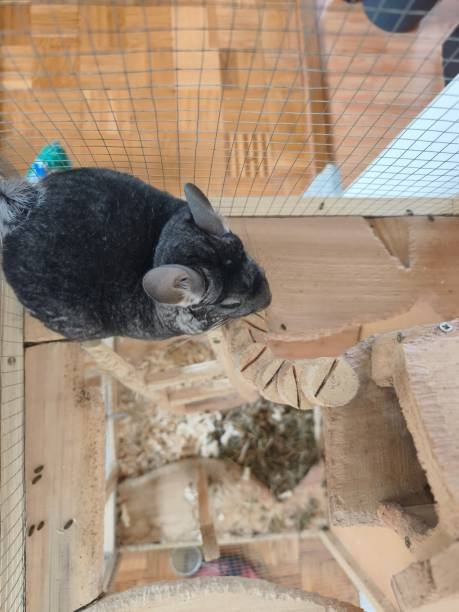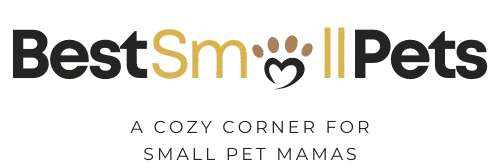Think Rabbits Poop a Lot? Wait Till You Meet a Chinchilla
This post contains affiliate links. This means I will make a commission at no extra cost to you should you click through and make a purchase. Read the full disclosure here.If you’re thinking about bringing home one of these fuzzy fluffballs, you may be wondering just how much mess you’re in for. The answer? Chinchillas poop—a lot. Like, way more than you’d expect from something that fits in your hoodie pocket. These adorable furballs are high-output little machines, and understanding their bathroom habits can help you keep their cage clean, your home sanitary, and your chinchilla happy.
Step-by-Step Breakdown: Why Chinchillas Poop So Much and What You Can Do About It
Step 1: Know What’s Normal for a Chinchilla
On average, a healthy chinchilla can poop 200–300 pellets a day. That’s not a typo. It’s completely normal, and not necessarily a sign of illness or digestive issues. Chinchillas have a high-fiber diet (mostly hay), which keeps their digestive system constantly moving. The result? A constant stream of tiny, dry, odorless poop pellets. You might even find them scattered outside the cage after playtime.
Quick fact: Chinchilla poop is firm, oval-shaped, and dark brown. If you notice soft, wet, or discolored droppings, that could be a red flag.
Step 2: Understand Why They Poop Constantly
Unlike many animals that go to the bathroom a few times a day, chinchillas have nonstop digestive motion. Their gut is designed to continuously process hay, and that means frequent output. Add to that their fast metabolism and high activity levels, and you’ve got a poop-making machine. They’re also not the type to “hold it in.” Wherever they are—cage, playpen, your shoulder—that’s where they go.
Step 3: Set Up a Poop-Friendly Cage (Yes, Really)
Knowing your chinchilla is going to poop constantly, the cage setup becomes crucial. Here’s what helps:
- Wire-bottom cages with a drop tray help separate poop from paws.
- Fleece liners are soft and reusable but require frequent shaking out and washing.
- Spot cleaning daily will keep the environment clean and reduce odor.
Make cleaning part of your routine—waiting even a few days can turn into a serious mess. Chinchilla poop may not smell, but quantity is the issue.
Step 4: Limit Poop Spread During Playtime
When your chinchilla is out for free roam or playtime, prepare for random poop trails. Because they don’t associate play areas with “potty time,” they’ll leave pellets as they explore. To manage this:
- Use a playpen or chin-safe room that’s easy to clean.
- Place pee pads or fleece mats around high-traffic zones.
- Keep a handheld vacuum nearby for quick cleanup.
Don’t let the poop trails discourage you—this is just chinchilla life!
Step 5: Don’t Confuse Poop With Potty Issues

One of the most common mistakes new chinchilla owners make is assuming frequent pooping is a litter training failure. But here’s the deal:
- Poop is hard to control, even with litter training.
- Urine, on the other hand, is what can be trained with more success.
Focus on training your chin to pee in a certain spot (or litter box), and accept that droppings are just part of daily maintenance. Even well-trained chinchillas will leave pellets everywhere.
Step 6: Watch for Abnormal Poop Patterns
While chinchillas poop a lot, it’s important to know when something isn’t right. Keep an eye out for:
- Soft or mushy poop – could signal a diet issue or stress.
- Very small or dry poop – may mean dehydration or slow digestion.
- Sudden decrease in droppings – a possible emergency (GI stasis).
If your chinchilla’s poop suddenly changes in texture, shape, or frequency, consult a vet experienced with exotic animals immediately.
Step 7: Adjust Their Diet for Optimal Digestion
Your chinchilla’s poop volume and quality are directly tied to their diet. The core of their nutrition should be:
- Unlimited timothy hay
- A high-quality chinchilla pellet
- Very limited treats
Avoid fruits, vegetables, or sugary snacks that can throw off their digestion. A clean, high-fiber diet keeps things moving the way they should—and makes poop cleanup easier for you.
Step 8: Clean Smart, Not Hard
Since chinchilla poop is a daily reality, make your cleanup process as painless as possible:
- Use a small dustpan and brush or vacuum daily.
- Wash fleece liners every few days with unscented detergent.
- Disinfect the cage weekly with a pet-safe cleaner.
Quick, consistent cleaning goes a long way. Waiting too long just makes it overwhelming—and trust us, chin poop builds up fast.
Step 9: Embrace the Poop Life
Yes, chinchillas poop a lot. But once you accept this adorable reality, it becomes just another part of the routine. These little floofs give so much in return—playfulness, fluff, and surprisingly big personalities. A little extra cleanup is a small tradeoff for everything they bring into your life.














